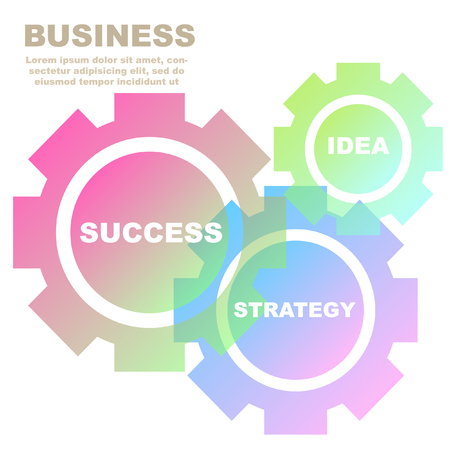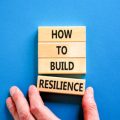1. Understanding the Power of Personal Branding
In today’s competitive American job market, personal branding has become a key long-term strategy for anyone aiming to achieve lasting career advancement. At its core, personal branding is about defining and communicating what makes you unique as a professional—your skills, values, experiences, and personality. Unlike traditional resumes or cover letters that simply list qualifications, a strong personal brand tells a compelling story about who you are and what you stand for. This is especially important in the United States, where employers increasingly look beyond technical expertise to find candidates who align with their company culture and values. A well-crafted personal brand helps you stand out, build credibility, and establish trust with colleagues, employers, and clients alike. By intentionally shaping your professional image both online and offline, you position yourself as an expert and thought leader in your field. Ultimately, investing in personal branding isn’t just about landing your next job—it’s about laying the foundation for a career that evolves and grows with you over time.
2. Defining Your Unique Value Proposition
In the journey of building a personal brand for long-term career advancement, one essential step is to define your unique value proposition (UVP). This means identifying what makes you different and valuable in your professional field. In the U.S. job market, employers and collaborators look for individuals who can clearly articulate their strengths, demonstrate relevant skills, and show genuine passion for their work.
Identifying Your Strengths
Start by reflecting on what you consistently do well. These could be technical abilities, soft skills, or even personality traits that others recognize in you. Consider feedback from colleagues, performance reviews, or even self-assessment tools to get an objective view. Knowing your strengths helps you focus your efforts where you can make the greatest impact.
Highlighting Key Skills
List out both hard skills (like programming, data analysis, or project management) and soft skills (such as communication, leadership, or adaptability). In the American workplace culture, versatility and continuous skill development are highly valued. Make sure to update your skillset regularly to stay competitive.
Skills Assessment Table
| Category | Examples | How It Sets You Apart |
|---|---|---|
| Hard Skills | Coding, Financial Analysis, Graphic Design | Demonstrates specialized knowledge; fills critical gaps in teams |
| Soft Skills | Teamwork, Problem-Solving, Emotional Intelligence | Makes you a reliable collaborator; improves workplace dynamics |
| Passions | Sustainability Initiatives, Mentoring Others, Innovation Projects | Shows commitment beyond job description; inspires others in the organization |
Aligning Passions with Career Goals
Your passions are not just hobbies—they signal where you’re most motivated and likely to excel. When your personal interests align with your professional path, it’s easier to maintain momentum over the long haul. In American business culture, professionals who bring authentic enthusiasm to their roles often stand out and advance faster.
Key Takeaway:
Defining your unique value proposition is about combining your strengths, skills, and passions into a clear message that resonates within your industry. This clarity will help guide your branding decisions and support lasting career advancement in any competitive U.S. workplace.

3. Leveraging Digital Platforms and Social Media
Building a personal brand that stands the test of time requires a strategic approach to your online presence. In today’s professional landscape, platforms like LinkedIn and personal websites are essential tools for career advancement in the United States. By mastering these digital spaces, you can showcase your expertise, connect with key industry players, and establish credibility that supports long-term growth.
Establishing Your LinkedIn Presence
Start by creating a comprehensive and up-to-date LinkedIn profile. Use a professional photo, craft a clear headline that reflects your unique value, and write a summary that tells your story in an authentic yet focused way. Be sure to highlight your accomplishments with measurable results where possible. Regularly share industry-relevant content, engage in meaningful discussions, and join groups aligned with your field to expand your network organically.
Maximizing Personal Websites
A personal website offers greater flexibility to shape your narrative. Include an “About Me” section that details your skills, experiences, and passions. Showcase a portfolio of work or testimonials from colleagues and clients to build trust with visitors. Integrate a blog to share insights or case studies—demonstrating both your expertise and commitment to continuous learning. Make sure your site is mobile-friendly and optimized for search engines (SEO) so potential employers or collaborators can easily find you.
Consistency Across Platforms
Your messaging should be consistent across all digital channels. Use similar language, tone, and visuals on LinkedIn, your website, and other social media profiles such as Twitter or Instagram if they support your professional goals. This cohesion reinforces your brand identity and helps others recognize you instantly, regardless of platform.
By applying practical techniques to maintain a strong and intentional online presence, you lay the groundwork for sustained career progression. Thoughtful engagement on digital platforms not only increases visibility but also opens doors to new opportunities—making it a cornerstone of any long-term personal branding strategy.
4. Networking and Relationship-Building
In the United States, networking is considered a cornerstone of long-term career advancement and an essential element in building a sustainable personal brand. Unlike transactional approaches seen in some cultures, American networking emphasizes authenticity, reciprocity, and ongoing relationship management. Building genuine professional connections not only opens doors to new opportunities but also enhances your reputation as a trustworthy and resourceful individual.
Understanding American Networking Practices
Americans value proactive communication and a willingness to both offer and seek help. Effective networking means engaging in meaningful conversations rather than simply exchanging business cards or connecting on LinkedIn. It involves following up after initial meetings, providing value without immediate expectations, and maintaining relationships over time. Small talk—discussing topics like sports, local events, or shared interests—is commonly used to break the ice before transitioning into professional discussions.
Strategies for Cultivating Authentic Connections
To build a strong network that supports your long-term strategy, focus on quality over quantity. Attend industry conferences, join professional associations, and participate in community events where you can meet people with shared goals. When reaching out, personalize your message to reflect genuine interest in the other person’s work. Be prepared to share your own expertise and insights when appropriate, but avoid overt self-promotion. Regularly check in with contacts by sharing relevant articles or congratulating them on achievements.
Key Differences: Transactional vs. Relational Networking
| Approach | Transactional Networking | Relational Networking (Preferred in U.S.) |
|---|---|---|
| Intent | Short-term gain | Long-term partnership |
| Communication Style | Direct and goal-oriented | Conversational and supportive |
| Follow-up | Seldom unless needed | Consistent and thoughtful |
| Value Exchange | One-sided or immediate return expected | Mutual benefit developed over time |
Practical Tips for Sustained Relationship-Building
- Be Proactive: Reach out regularly to maintain contact even when you don’t need anything specific.
- Add Value: Share resources, introduce contacts to each other, or provide insights relevant to their interests.
- Diversify Your Network: Connect across industries and backgrounds to broaden perspectives.
- Show Appreciation: Send thank-you notes or acknowledge contributions publicly when appropriate.
- Maintain Integrity: Build trust by keeping commitments and respecting confidentiality.
A robust network built on authentic relationships is a long-term investment in your career success. By adopting these American networking practices, you position yourself as a credible professional whose personal brand stands the test of time.
5. Consistency and Authenticity in Personal Branding
Maintaining a consistent and authentic personal brand is crucial for long-term career advancement in the American professional landscape. Whether you’re networking at industry events, engaging on LinkedIn, or contributing to team projects, your personal brand should present a unified message that clearly reflects who you are and what you stand for. Consistency across all platforms—online and offline—helps build trust with colleagues, clients, and potential employers.
Establishing a Unified Message
Begin by identifying your core values, strengths, and the unique contributions you bring to your field. Make sure these elements are clearly communicated in your resume, social media profiles, personal website, and in-person interactions. For example, if your brand emphasizes innovation and collaboration, these traits should be evident in your portfolio, posts, professional conversations, and community involvement.
Aligning Online Presence with Real-World Actions
Your online persona must accurately mirror your offline behavior. If you showcase strong leadership skills on LinkedIn but fail to demonstrate them during meetings or projects, this inconsistency can damage your credibility. Use the same tone of voice, messaging style, and professional standards everywhere—from digital platforms to face-to-face encounters—to reinforce your authentic image.
Building Trust Through Authenticity
Authenticity means being true to yourself rather than trying to fit into an idealized version of success. In the U.S., where workplace culture values transparency and relatability, authenticity is especially important. Share real stories about challenges you’ve overcome or lessons learned from failure; this vulnerability fosters deeper connections and helps others see you as trustworthy and approachable.
Regularly Reviewing Your Brand
Periodically review your public profiles and personal interactions to ensure they remain aligned with your evolving career goals. Solicit feedback from mentors or peers to identify any gaps between how you perceive yourself and how others see you. This proactive approach ensures that your brand stays relevant while remaining genuine to your professional journey.
6. Adapting and Evolving Your Brand Over Time
One of the most critical elements of a long-term personal branding strategy is the willingness to adapt and evolve as your career moves forward. The professional landscape in the United States is dynamic—industries shift, technology advances, and market demands change rapidly. To remain relevant and continue advancing, it’s essential to regularly update your personal brand so it reflects your current skills, values, and ambitions.
Why Regular Updates Matter
Your personal brand is not a one-time project; it’s a living reflection of who you are as a professional. As you gain new experiences, certifications, or accomplishments, your brand should communicate these developments. For example, if you pivot from technical roles into management or leadership positions, your messaging—across LinkedIn profiles, resumes, and networking conversations—should highlight those new competencies.
Realigning with Career Goals
As your aspirations shift over time, be proactive about realigning your personal brand to match. This may mean adjusting your online presence to emphasize new skill sets or reworking your elevator pitch to better position yourself for opportunities aligned with your evolving objectives. Make it a habit to review your brand at least once a year, ensuring that it accurately supports where you want to go next.
Staying Ahead of Trends
American workplace culture values professionals who are not only skilled but also adaptable. By staying informed about industry trends and anticipated changes in your field, you can proactively incorporate relevant expertise into your brand narrative. This foresight demonstrates both initiative and strategic thinking—qualities that employers and collaborators respect.
Seeking Feedback for Growth
Don’t underestimate the value of feedback from mentors, colleagues, or industry peers. Their perspectives can reveal blind spots or opportunities for growth that you might miss on your own. Use this input to fine-tune your messaging and presentation so that your personal brand always feels fresh and authentic.
Ultimately, longevity in career advancement comes down to continual learning and flexibility. By consistently adapting and evolving your personal brand in alignment with your career progression, you ensure that you remain visible, relevant, and well-positioned for future opportunities in any phase of your professional journey.


